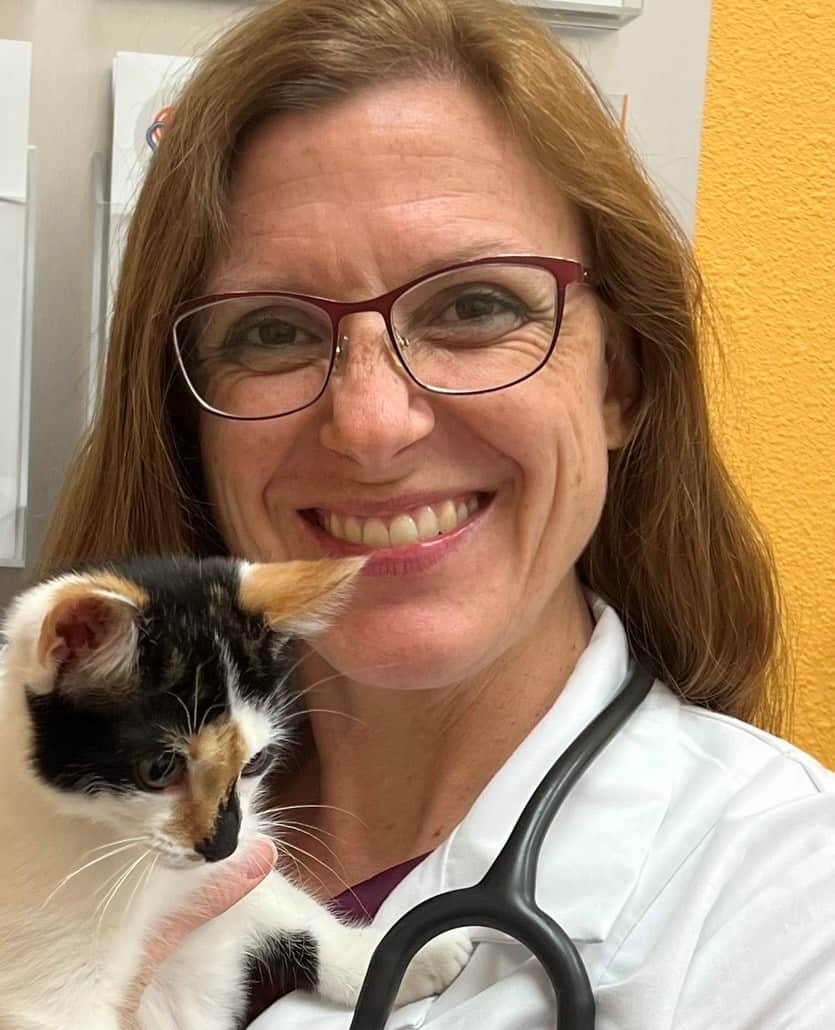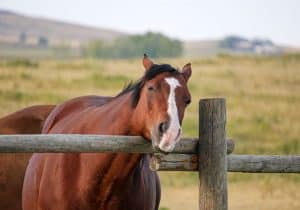Free Fecal Water Syndrome in Horses and What To Do About It
- Topics: 2022 EquiSummit, Article, Horse Care, Nutrition, Water & Electrolytes

Unlike diarrhea in horses, free fecal water (FFW) syndrome is not life-threatening and involves free water being passed before, after, or with normal fecal balls. But because horses’ bodies need to conserve water, losing excess fluid in their manure—even if it is apparently benign—indicates a gastrointestinal (GI) disturbance is making it difficult for the horse to manage or resorb water.
“Horses move monumental volumes of water through their gastrointestinal tracts on a daily basis,” said Burt Staniar, PhD, associate professor of equine science in Pennsylvania State College of Agricultural Sciences’ Department of Animal Science, during his virtual presentation at the 2022 EquiSummit.
What Causes Free Fecal Water Syndrome?
In terms of intake, horses need approximately 30 liters (1 liter is a bit more than 1/4 gallon) of water a day. A surprising amount of this can come from forage. Staniar said an average 500-kilogram (1,100-pound) horse consuming fresh forage from pasture containing 80% water might take in more than 22 liters of water daily.
“This is simply from the forage. Even hay has 10-15% water,” said Staniar.
An average horse’s GI tract contains an estimated 73 liters of water at any given point, which moves continuously between the circulatory and GI systems. For example, the horse secretes about 40 liters of water in saliva per day, and bile and pancreatic secretions add an additional 55 liters of water per day to the small intestine. In the hindgut (the cecum and large colon, or large intestine), however, water is resorbed, not secreted: 15 liters by the cecum and large colon each and an additional 6 liters by the small colon.
“Overall, about 100 liters or 25 gallons of water are secreted into and absorbed from the gastrointestinal tract by a horse at rest,” said Staniar. “Water movements and conservation during exercise become even more critical due to water’s essential roles in maintaining health and athletic performance.”
He added, “A healthy GI tract is integral for supporting these water movements. It is absolutely critical to have intact tight junctions, which are the protein links that hold the colonic cells together lining the walls of the hindgut.”
When those tight junctions break down or do not function correctly, which can happen in response to any type of stress, changes in gut permeability could ensue, which negatively affect the horse’s ability to absorb water.
While risk factors and “causes” of FFW syndrome are unclear, stress could be involved. Staniar said study results suggest affected horses are lower in the herd’s social hierarchy, which could be a source of stress that ultimately alters tight-junction function.
How Do I Manage Free Fecal Water Syndrome?
Without knowing the exact cause but appreciating that abnormal water resorption is an underlying contributing factor, Staniar recommended evaluating the type of fiber being offered to horses and other nutrients that might enhance GI function.
Fiber is found in fresh and dry forages, including pelleted feeds.
“Recognizing that different types of forage have unique chemical and physical properties, we can use a variety of forages to maximize GI health,” he advised.
Consider, for example, the different properties of the various forages: long-stem grass hay, alfalfa, beet pulp, whole oats, soybean hulls, and wheat middlings. These, said Staniar, contain different amounts and types of fiber and moisture and can be used in various combinations to enhance gastric function.
“For example, the fiber in beet pulp might be more digestible than the fiber in long-stem grass hay, but the fiber in the hay might cause the horse to chew more than the fiber in the beet pulp, the latter example leading to greater saliva production,” Staniar noted. “Owners need to be open to trying different types and combinations of fiber.”
In addition, he explained that dietary fiber facilitates microbial fermentation in the hindgut, with the byproducts providing energy to the horse and supporting the integrity of the intestinal wall.
“This concept supports the idea that pre- and probiotics, as well as butyric acid (which feed those hindgut microorganisms), will help maintain tight junctions and can be used in a multiprong approach to managing FFW,” said Staniar.

Written by:
Stacey Oke, DVM, MSc
Related Articles
Stay on top of the most recent Horse Health news with















